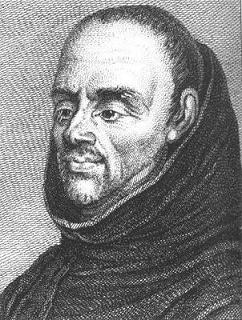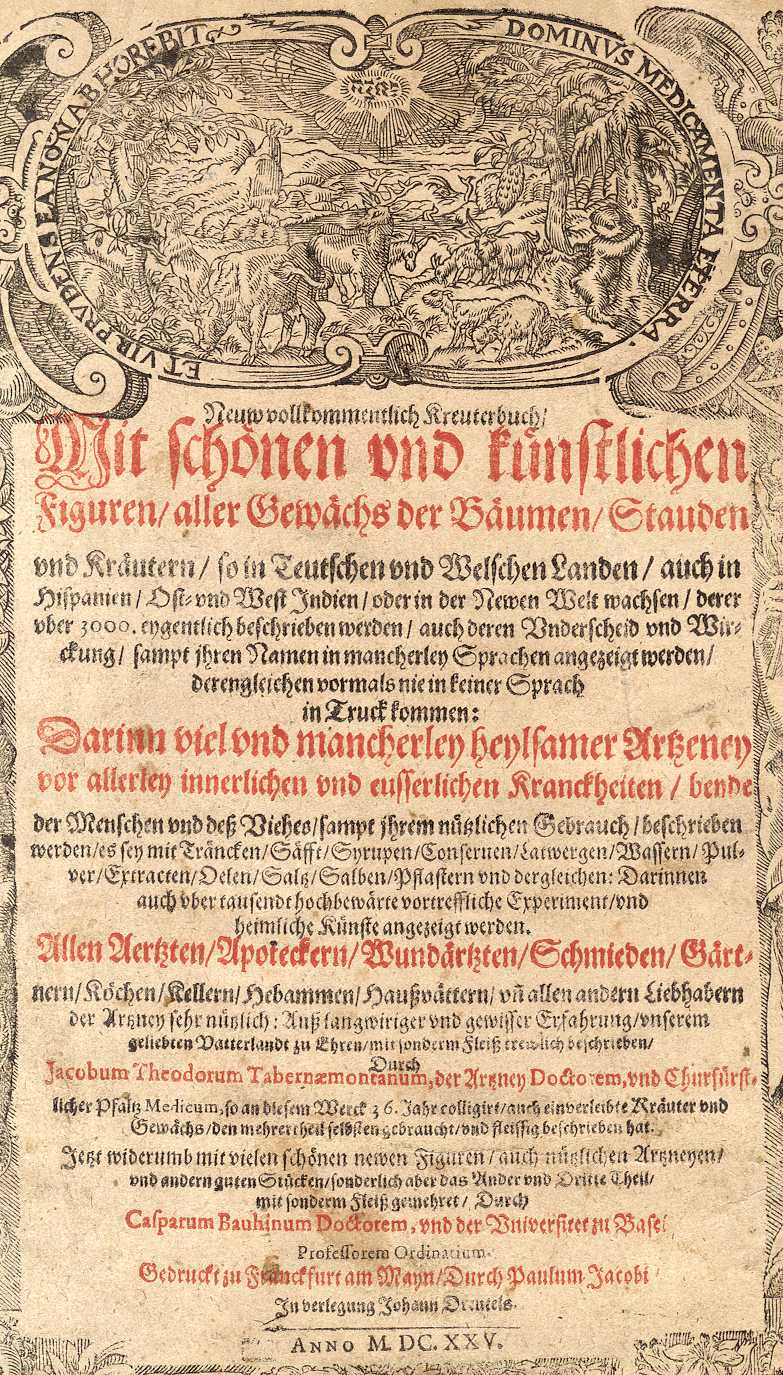|
Basilius Besler
Basilius Besler (1561–1629) was a respected Nuremberg apothecary and botanist, best known for his monumental ''Hortus Eystettensis''. Biography Besler was born in Nuremberg, Germany on February 13 1561, the son of Michael Besler. His first wife was Rosine Flock, who he married on 31 January 1585. Later he married Susanne Schmidt on 1 December 1596. Altogether he had 16 children. He was elected a member of the city council in 1594. Besler established a pharmacy, ''Zum Marienbild'', at Nuremberg's Hay Market in 1589, and developed his own botanical garden and collection of specimens, for which he became well known. He was curator of the garden ( Eichstätt Garden) of Johann Konrad von Gemmingen (1561–1612), Prince-bishop of Eichstätt in Bavaria. The bishop was an enthusiastic botanist who derived great pleasure from his garden, which rivaled Hortus Botanicus Leiden among early European botanical gardens outside Italy. The gardens surrounded the bishop's palace, Willi ... [...More Info...] [...Related Items...] OR: [Wikipedia] [Google] [Baidu] |
Nuremberg
Nuremberg ( ; german: link=no, Nürnberg ; in the local East Franconian dialect: ''Nämberch'' ) is the second-largest city of the German state of Bavaria after its capital Munich, and its 518,370 (2019) inhabitants make it the 14th-largest city in Germany. On the Pegnitz River (from its confluence with the Rednitz in Fürth onwards: Regnitz, a tributary of the River Main) and the Rhine–Main–Danube Canal, it lies in the Bavarian administrative region of Middle Franconia, and is the largest city and the unofficial capital of Franconia. Nuremberg forms with the neighbouring cities of Fürth, Erlangen and Schwabach a continuous conurbation with a total population of 800,376 (2019), which is the heart of the urban area region with around 1.4 million inhabitants, while the larger Nuremberg Metropolitan Region has approximately 3.6 million inhabitants. The city lies about north of Munich. It is the largest city in the East Franconian dialect area (colloquially: "F ... [...More Info...] [...Related Items...] OR: [Wikipedia] [Google] [Baidu] |
1561 Births
Year 1561 ( MDLXI) was a common year starting on Wednesday (link will display the full calendar) of the Julian calendar. Events January–June * January 31 – The Edict of Orleans suspends the persecution of the Huguenots in France. * March 1 – Kingston Grammar School is founded in England. * April 14 – The citizens of Nuremberg see what appears to be an aerial battle, followed by the appearance of a large black triangular object and a large crash (with smoke) outside the city. A ''news notice'' (an early form of newspaper) is printed on April 14, describing the event. * May 8 – Madrid is declared the capital of Spain, by Philip II. * June 4 ** The spire of Old St Paul's Cathedral in the City of London catches fire and crashes through the nave roof, probably as the result of a lightning strike. The spire is not rebuilt. ** The nobility of Harrien-Wierland and the town of Reval (on June 6) of the Livonian Order swear allegiance to Sweden. * J ... [...More Info...] [...Related Items...] OR: [Wikipedia] [Google] [Baidu] |
17th-century German Botanists
The 17th century lasted from January 1, 1601 ( MDCI), to December 31, 1700 ( MDCC). It falls into the early modern period of Europe and in that continent (whose impact on the world was increasing) was characterized by the Baroque cultural movement, the latter part of the Spanish Golden Age, the Dutch Golden Age, the French ''Grand Siècle'' dominated by Louis XIV, the Scientific Revolution, the world's first public company and megacorporation known as the Dutch East India Company, and according to some historians, the General Crisis. From the mid-17th century, European politics were increasingly dominated by the Kingdom of France of Louis XIV, where royal power was solidified domestically in the civil war of the Fronde. The semi-feudal territorial French nobility was weakened and subjugated to the power of an absolute monarchy through the reinvention of the Palace of Versailles from a hunting lodge to a gilded prison, in which a greatly expanded royal court could be more easily k ... [...More Info...] [...Related Items...] OR: [Wikipedia] [Google] [Baidu] |
Taschen
Taschen is a luxury art book publisher founded in 1980 by Benedikt Taschen in Cologne, Germany. As of January 2017, Taschen is co-managed by Benedikt and his eldest daughter, Marlene Taschen. History The company began as Taschen Comics, publishing Benedikt's comic collection. Taschen focuses on making lesser-seen art available to mainstream bookstores, including fetishistic imagery, queer art, historical erotica, pornography, and adult magazines (including multiple books with ''Playboy'' magazine). The firm has brought potentially controversial art into broader public view, publishing it alongside its more mainstream books of comics reprints, art photography, painting, design, fashion, advertising history, film, and architecture.Degen Pener''Taschen Books Chief Reveals New Projects, Talks 'Fifty Shades' and $12M Books'' published in The Hollywood Reporter, 25 November 2014 Taschen publications are available in a various sizes, from oversized tomes to small pocket-sized ... [...More Info...] [...Related Items...] OR: [Wikipedia] [Google] [Baidu] |
British Library
The British Library is the national library of the United Kingdom and is one of the largest libraries in the world. It is estimated to contain between 170 and 200 million items from many countries. As a legal deposit library, the British Library receives copies of all books produced in the United Kingdom and Ireland, including a significant proportion of overseas titles distributed in the UK. The Library is a non-departmental public body sponsored by the Department for Digital, Culture, Media and Sport. The British Library is a major research library, with items in many languages and in many formats, both print and digital: books, manuscripts, journals, newspapers, magazines, sound and music recordings, videos, play-scripts, patents, databases, maps, stamps, prints, drawings. The Library's collections include around 14 million books, along with substantial holdings of manuscripts and items dating as far back as 2000 BC. The library maintains a programme for content acquis ... [...More Info...] [...Related Items...] OR: [Wikipedia] [Google] [Baidu] |
Marquis Who's Who
Marquis Who's Who ( or ) is an American publisher of a number of directories containing short biographies. The books usually are entitled ''Who's Who in...'' followed by some subject, such as ''Who's Who in America'', ''Who's Who of American Women'', ''Who's Who in the World'', ''Who's Who in Science and Engineering'', ''Who's Who in American Politics'', etc. Often, ''Marquis Who's Who'' books are found in the reference section of local libraries, at corporate libraries, and are also used for research by universities. In 2005, while Marquis was owned by News Communications, Inc., publishers of '' The Hill''; ''The New York Times'' referred to the sixtieth edition of ''Who's Who in America'' as "a librarian's '' Vanity Fair''". Marquis states in its preface that ''Who's Who in America'' "endeavors to profile the leaders of American society; those men and women who are influencing their nation's development". Entries in ''Marquis Who's Who'' books list career and personal data for ... [...More Info...] [...Related Items...] OR: [Wikipedia] [Google] [Baidu] |
Besleria
''Besleria'' is a genus of ca. 200 species of large herbs and soft-stemmed subshrubs or shrubs in the flowering plant family Gesneriaceae. They occur in Central America, South America, and the West Indies. The closely related genus ''Gasteranthus'' was previously included in ''Besleria''. The two genera have been separated on the basis of stomatal (aggregated in ''Gasteranthus'', scattered in ''Besleria'') and fruit (fleshy capsule in ''Gasteranthus'', berry in ''Besleria'') characters.Wiehler (1975) Selected species * ''Besleria aggregata'' * ''Besleria comosa'' * ''Besleria elegans'' * ''Besleria fasciculata'' * ''Besleria formosa'' * ''Besleria leucostoma'' * ''Besleria lutea'' L. * ''Besleria macahensis'' * ''Besleria melancholica'' * ''Besleria miniata'' * ''Besleria modica'' * ''Besleria notabilis'' * ''Besleria princeps'' * ''Besleria quadrangulata'' * ''Besleria triflora ''Besleria'' is a genus of ca. 200 species of large herbs and soft-stemmed subshrubs or shrubs in ... [...More Info...] [...Related Items...] OR: [Wikipedia] [Google] [Baidu] |
Genus
Genus ( plural genera ) is a taxonomic rank used in the biological classification of extant taxon, living and fossil organisms as well as Virus classification#ICTV classification, viruses. In the hierarchy of biological classification, genus comes above species and below family (taxonomy), family. In binomial nomenclature, the genus name forms the first part of the binomial species name for each species within the genus. :E.g. ''Panthera leo'' (lion) and ''Panthera onca'' (jaguar) are two species within the genus ''Panthera''. ''Panthera'' is a genus within the family Felidae. The composition of a genus is determined by taxonomy (biology), taxonomists. The standards for genus classification are not strictly codified, so different authorities often produce different classifications for genera. There are some general practices used, however, including the idea that a newly defined genus should fulfill these three criteria to be descriptively useful: # monophyly – all descendants ... [...More Info...] [...Related Items...] OR: [Wikipedia] [Google] [Baidu] |
Charles Plumier
Charles Plumier (; 20 April 1646 – 20 November 1704) was a French botanist after whom the frangipani genus ''Plumeria'' is named. Plumier is considered one of the most important of the botanical explorers of his time. He made three botanizing expeditions to the West Indies, which resulted in a massive work ''Nova Plantarum Americanarum Genera'' (1703–1704) and was appointed botanist to King Louis XIV of France. Biography Born in Marseille, at the age of 16, he entered the religious order of the Minims. He devoted himself to the study of mathematics and physics, made physical instruments, and was an excellent draughtsman, painter, and turner. On being sent to the French monastery of Trinità dei Monti at Rome, Plumier studied botany under two members of the order, and especially under Cistercian botanist, Paolo Boccone. After his return to France, he became a pupil of Joseph Pitton de Tournefort, whom he accompanied on botanical expeditions. He also explored the coasts ... [...More Info...] [...Related Items...] OR: [Wikipedia] [Google] [Baidu] |
Matthias De L'Obel
Mathias de l'Obel, Mathias de Lobel or Matthaeus Lobelius (1538 – 3 March 1616) was a Flemish physician and plant enthusiast who was born in Lille, Flanders, in what is now Hauts-de-France, France, and died at Highgate, London, England. He studied at the University of Montpellier and practiced medicine in the low countries and England, including positions as personal physicians to two monarchs. A member of the sixteenth-century Flemish School of Botany, he wrote a series of major treatises on plants in both Latin and Dutch. He was the first botanist to appreciate the distinction between monocotyledons and dicotyledons. The ''Lobelia'' plant is named after him. Life Mathias de l'Obel was born in Lille (Flemish ''Rijsel'') in the County of Flanders, Spanish Netherlands, now French Flanders in 1538, the son of Jean De l'Obel, a lawyer whose practice specialized in aristocrats in the army. Relatively little is known about his life. By the age of sixteen he had already devel ... [...More Info...] [...Related Items...] OR: [Wikipedia] [Google] [Baidu] |
Jacobus Theodorus Tabernaemontanus
Jacobus Theodorus (Jacob Diether), called Tabernaemontanus (1525 – August 1590) was a physician and an early botanist and herbalist, one of the "fathers of German botany" whose illustrated ''Neuw Kreuterbuch'' (Frankfurt, 1588) was the result of a lifetime's botanizing and medical practice. It provided unacknowledged material for John Gerard's better-known ''Herball'' (London, 1597) and was reprinted in Germany throughout the 17th century. His Latin, Latinised name is a compressed form of the Latinized name ''Tabernae Montanae'' of his home town of Bergzabern in the Electorate of the Palatinate, Palatinate. Tabernaemontanus began as a student of two of the pioneers of Renaissance botany, first of Otto Brunfels and later of Hieronymus Bock. The career of Tabernaemontanus was supported in the usual manner of his time: by a series of places as court physician to German nobles. In 1549 he was the private physician to Philip II, Count of Nassau-Saarbrücken and later (from 1561 on) to ... [...More Info...] [...Related Items...] OR: [Wikipedia] [Google] [Baidu] |






